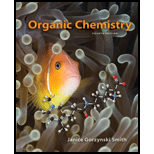
Interpretation: The seven isomeric
Concept introduction: Alkynes are an
Want to see the full answer?
Check out a sample textbook solution
Chapter 11 Solutions
Connect Access Card For Organic Chemistry
- Draw the five isomers of C6H14 and write the IUPAC name of each compound.arrow_forwarddraw the structure of two costitution isomers with the molecular formula of C4H10. Give the IUPAC name of each isomerarrow_forwardBased on naming branched alkyl substituents, and draw all possible alkyl groups having the formula C5H11–. Give the IUPAC names for the eight compounds of molecular formula C10H20that contain a cyclopentane ring with each of these alkyl groups as a substituent.arrow_forward
- What alkane, with molecular formula C5H12, forms only one monochlorinated product when it is heated with Cl2?arrow_forward(b) Draw structural formulas of at least two alkynes of each molecular formula.(1) C6H10arrow_forwardHow many structural isomers of C4H8O have an ether and an allege?arrow_forward
- Draw a cyclic ether with molecular formula C5H10Oarrow_forwardFor each molecular formula, draw all the possible constitutional isomers of alcohols withthat formula. Give the IUPAC name for each alcohol.(a) C3H8O (b) C4H10O (c) C3H6O (d) C3H4Oarrow_forwardFor each molecular formula, draw all the isomeric alkynes, and give their IUPAC names.Circle the acetylenic hydrogen of each terminal alkyne. C6H10 (seven isomers)arrow_forward
- Write out the structural formula for three ethers that have the formula C4H10Oarrow_forwardDraw structural formulas of at least two alkynes of each molecular formula. 3) C7H8arrow_forwardDraw the seven constitutional isomers having molecular formula C4H10O. Identify the functional group in each isomer.arrow_forward
 Organic And Biological ChemistryChemistryISBN:9781305081079Author:STOKER, H. Stephen (howard Stephen)Publisher:Cengage Learning,
Organic And Biological ChemistryChemistryISBN:9781305081079Author:STOKER, H. Stephen (howard Stephen)Publisher:Cengage Learning, General, Organic, and Biological ChemistryChemistryISBN:9781285853918Author:H. Stephen StokerPublisher:Cengage Learning
General, Organic, and Biological ChemistryChemistryISBN:9781285853918Author:H. Stephen StokerPublisher:Cengage Learning

